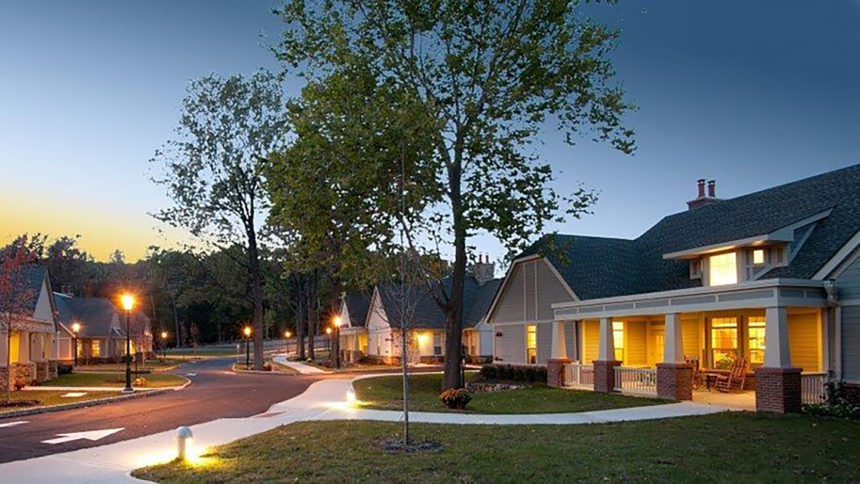
After years of gathering and studying data about their small-home model of long-term care, Green House leaders made a calculated move this week to give skilled nursing operators more reasons to adopt the innovative model.
Leaders have had good reason to be extremely prescriptive about standards to officially become a part of the Green House movement. But the organization is now relaxing some rules and exploring additional possibilities, acknowledged Green House Senior Director Susan Ryan.
She told McKnight’s Long-Term Care News Tuesday she received numerous inquiries after the group issued a press release announcing it will now consider applications for variances such as housing more than 12 residents in a building. New Jewish Home of New York City became the first to receive trademark approval when it applied to develop such a facility, Green House officials announced Monday.
“The interest generated from the press release was really strong with providers who might have interest, especially here at the LeadingAge (annual) meeting,” Ryan said by telephone from Denver. “I went to a reception and had people talking to me about it, explaining, ‘This is what we’re thinking.’”
There are currently 371 Green House homes in 32 states. Some 71 of those opened during the pandemic, which Ryan acknowledged has been a good period for the small-home model’s image. The pandemic provided “a crucible moment” for some providers who began to wonder if they could create smaller, more tight-knit buildings with less foot traffic and better odds of maintaining tighter infection control, she added.
“I think COVID has shown the light on how significantly broken our traditional system is. I think our ‘good enough’ was not good enough and we have to really take a hard look at how will we do better for those we serve, both those who live there and work there,” she added.
The Green House model by traditional definition includes buildings that house no more than 12 residents, and a consistent, small staff. Since April, The Green House Project and the Pioneer Network have operated under the joint banner of the Center for Innovation.
“I think one of the biggest barriers [to more adopting this model] has been the prescriptiveness and rigidity of Green House rules, along with operators saying they don’t have enough space for multiple buildings,” Ryan said. “I would argue we needed that prescriptiveness. Researchers have wanted very little variability. But it does work, so what would happen if we put two more beds in there? How far could we go? What would happen if we went to 16 (beds)? What would it do to quality and cost and would consumers like it?“
She said an organization subcommittee has been studying what the possible metrics could be in the future. Much as they criticize typical institutional nursing homes’ “one-size-fits-all” approach, Ryan said that Green House proponents should not get stuck in that frame of mind for their own recipe for senior care.
Over the last 10 years, Green House officials have worked with 20 communities that have mimicked many of the model’s principles, yet not enough to earn the Green House trademark, Ryan explained. That’s what made Monday’s announcement so notable: Here was a variation granted with a full stamp of approval.
“It’s not saying ‘anything goes at all,’” Ryan cautioned. “It’s how can we try some new things with the process, and then collect the data.”
This all dovetails with a movement to be a part of a national academic coalition pursuing more modern models of long-term care, she pointed out.
“It’s not just about a small house. It’s about getting the organizational structure and cultural paradigm right,” she emphasized.




